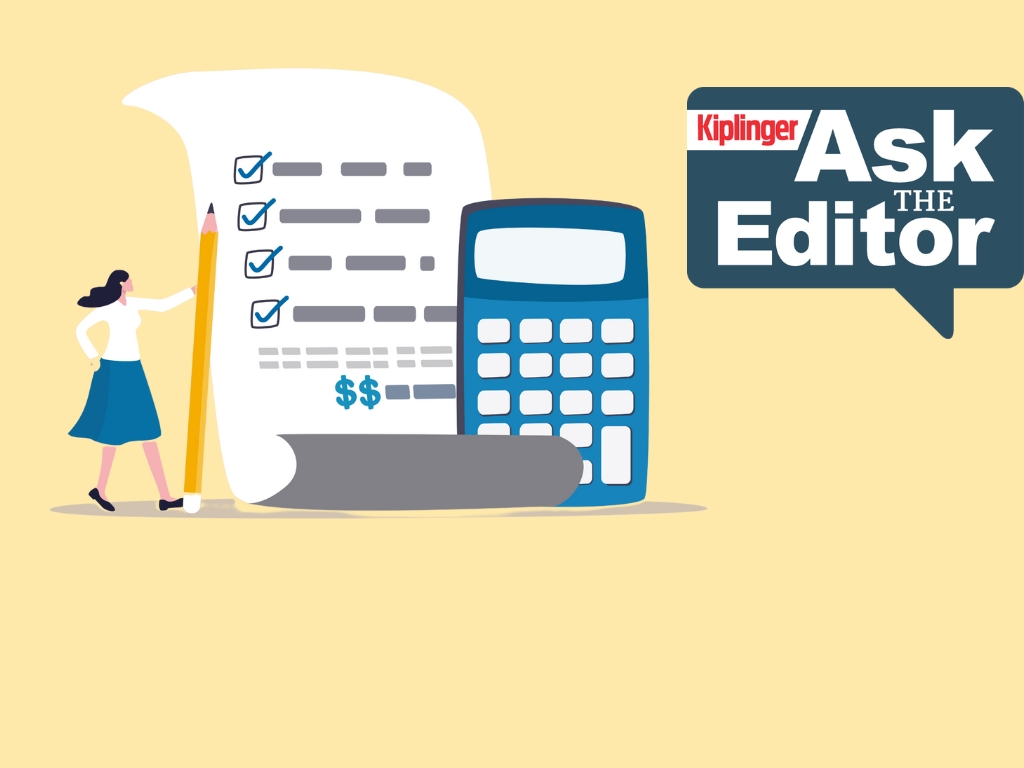Four Tax-Friendly Ways to Pay for Long-Term Care Insurance
No matter how meticulously you've planned for retirement, if you don't have long-term-care insurance, a catastrophic illness could clean out your savings.

Kathryn Pomroy
Every day until 2030, 10,000 Baby Boomers will turn 65. Not to mention that seven out of ten people will require long-term care in their lifetime. Fortunately, there are several tax-advantaged ways to help take the sting out of the costs of long-term care.
Buying long-term care insurance is one way to ease the financial burden, especially when you consider that assisted living community costs increased by 10% to an annual national median of $70,800 per year, according to the latest study by Genworth, a long-term care insurer. Private room nursing home costs are a whopping $127,750.
Breaking it down to monthly costs: For a semi-private room at a nursing home, you will pay an average of $9,277, and for a private room, $10,646. Community and assisted living costs are lower but still substantial. The monthly cost of adult day health care is $2,167, while care in an assisted living facility averages $5,900. Long-term care insurance is expensive.
From just $107.88 $24.99 for Kiplinger Personal Finance
Be a smarter, better informed investor.

Sign up for Kiplinger’s Free Newsletters
Profit and prosper with the best of expert advice on investing, taxes, retirement, personal finance and more - straight to your e-mail.
Profit and prosper with the best of expert advice - straight to your e-mail.
Keep in mind that because long-term care isn't considered medical care, regular health insurance won't cover these costs. And, because you'll first have to use up your assets, Medicaid, the government program for people with low income, may not cover these costs either.
Here are four tax-friendly ways to cover the costs of your long-term care insurance premiums.
1. Tax-free withdrawals from an HSA
An HSA is a tax-advantaged account that can be used to pay for qualified medical expenses, like copays, prescriptions, eyeglasses, dental care, X-rays, and more. Your contributions reduce your taxable income, and the money isn't taxed while it’s in the account. Plus, as long as you use your HSA funds for qualified medical expenses, you won't owe taxes when you take money out of the account.
As a bonus, if you have a health savings account, you can withdraw money tax-free to pay a portion of eligible long-term-care insurance premiums. The amount you can withdraw is based on your age.
According to the American Association for Long-Term Care Insurance and the IRS, the 2025 tax-deductible limits for long-term care insurance premiums, by age, which also apply to HSA withdrawals, are:
- Age 40 or younger: $480 per year
- Ages 41 to 50: $900 per year
- Ages 51 to 60: $1,800 per year
- Ages 61 to 70: $4,820 per year
- Age 71 and older: $6,020 per year
See IRS Publication 969, Health Savings Accounts and Other Tax-Favored Health Plans, for more information.
2. Deduct long-term-care premiums as a medical expense
A portion of your long-term-care premiums can qualify as a tax-deductible medical expense; the same age-based limits apply to these deductions as to health savings account withdrawals. You can’t double dip and deduct the expenses if you took a tax-free HSA withdrawal to pay the same costs. Medical expenses are deductible to the extent they exceed 7.5% of your adjusted gross income. Most traditional long-term-care policies issued in the past several years are eligible.
See IRS Publication 502, Medical and Dental Expenses, for more information about the requirements.
3. Make a tax-free transfer from an annuity
You can transfer money tax-free from an annuity to cover premiums for a traditional long-term-care policy or to pay for another annuity that also provides long-term-care benefits. The transfer (called a 1035 exchange) must be made directly from the annuity to pay the premiums. If you withdraw the money from the annuity rather than making the tax-free transfer, you have to pay income taxes on the gains, which are taxed first, before you recover your principal.
Read: How To Pay For long-Term Care. You can also reach out to your long-term-care insurer for help making the transfer.
4. Make a tax-free transfer from permanent life insurance
You can also make a tax-free 1035 exchange from a cash-value life insurance policy to pay long-term-care premiums, either for a traditional long-term-care policy or a policy that combines life insurance and long-term-care benefits. The money can come from the policy’s cash value, or you can use the policy’s dividends to pay the long-term-care premiums. This strategy can be useful as you get older and your primary needs change from life insurance to long-term care.
Pros and Cons of long-term care insurance
PROS | CONS |
You won't have to deplete your savings | It can be expensive |
Monthly premiums can be reasonable | Insurance companies can raise your premiums |
You may be able to live in your home longer | It can be hard to know how much coverage you'll need |
The costs won't come out of your families wallets | Your coverage may not cover all the care you need |
You'll pay less in taxes | You may not end up needing the policy |
| Row 6 - Cell 0 | Row 6 - Cell 1 |
Final Word
You can get long-term care at home, in the community, in an assisted living facility or in a nursing home. It’s important to start planning for long-term care now to maintain your independence later and make sure you get the care you may need, in the best setting you want.
Medicare, Medicare Supplement Insurance (Medigap) and most other health insurance won’t pay for long-term care. You might qualify for long-term care through Medicaid, or you can choose to buy private long-term care insurance. Remember, no matter how carefully you plan for retirement, if you don't have long-term-care insurance, a catastrophic illness could wipe out your savings.
Related Content
- Long-Term Care Insurance: 10 Things You Should Know
- Deduct Expenses for Long-Term Care on Your Tax Return
- Average Cost of Health Care by Age
Profit and prosper with the best of Kiplinger's advice on investing, taxes, retirement, personal finance and much more. Delivered daily. Enter your email in the box and click Sign Me Up.

As the "Ask Kim" columnist for Kiplinger's Personal Finance, Lankford receives hundreds of personal finance questions from readers every month. She is the author of Rescue Your Financial Life (McGraw-Hill, 2003), The Insurance Maze: How You Can Save Money on Insurance -- and Still Get the Coverage You Need (Kaplan, 2006), Kiplinger's Ask Kim for Money Smart Solutions (Kaplan, 2007) and The Kiplinger/BBB Personal Finance Guide for Military Families. She is frequently featured as a financial expert on television and radio, including NBC's Today Show, CNN, CNBC and National Public Radio.
- Kathryn PomroyContributor
-
 The AI Boom Will Lift IT Spending Next Year
The AI Boom Will Lift IT Spending Next YearThe Kiplinger Letter 2026 will be one of strongest years for the IT industry since the PC boom and early days of the Web in the mid-1990s.
-
 Ask the Editor: Roth Conversions and Tax Planning
Ask the Editor: Roth Conversions and Tax PlanningAsk the Editor In this week's Ask the Editor Q&A, Joy Taylor answers questions on how to convert a traditional IRA to a Roth IRA.
-
 10 Retirement Tax Plan Moves to Make Before December 31
10 Retirement Tax Plan Moves to Make Before December 31Retirement Taxes Proactively reviewing your health coverage, RMDs and IRAs can lower retirement taxes in 2025 and 2026. Here’s how.
-
 I Tried a New AI Tool to Answer One of the Hardest Retirement Questions We All Face
I Tried a New AI Tool to Answer One of the Hardest Retirement Questions We All FaceAs a veteran financial journalist, I tried the free AI-powered platform, Waterlily. Here's how it provided fresh insights into my retirement plan — and might help you.
-
 Claiming the Standard Deduction? Here Are Five Tax Breaks for Retirement in 2025
Claiming the Standard Deduction? Here Are Five Tax Breaks for Retirement in 2025Tax Tips If you’re retired and filing taxes, these five tax credits and deductions could provide thousands in relief (if you qualify).
-
 IRS Names Its First CEO: But He’s Also Still Running Social Security
IRS Names Its First CEO: But He’s Also Still Running Social SecurityTax News Will this new role make it difficult to address emerging issues like budget and staffing cuts and customer service concerns?
-
 IRS Phasing Out Paper Checks: What Happens After September 30?
IRS Phasing Out Paper Checks: What Happens After September 30?Tax Changes Avoid delays when IRS tax refunds and Social Security paper checks are cut off. Here’s what to know.
-
 Ask the Editor, September 12: Tax Questions on 529 Plan Rollovers to a Roth IRA
Ask the Editor, September 12: Tax Questions on 529 Plan Rollovers to a Roth IRAAsk the Editor In this week's Ask the Editor Q&A, we answer four questions from readers on transferring 529 plan money to a Roth IRA.
-
 Ask the Editor, August 29: Tax Questions on Estate and Gift Taxes
Ask the Editor, August 29: Tax Questions on Estate and Gift TaxesAsk the Editor In this week's Ask the Editor Q&A, we answer questions from readers on estate and gift taxes.
-
 Will You Get a ‘Surprise’ Tax Bill on Your Social Security Benefits in Retirement?
Will You Get a ‘Surprise’ Tax Bill on Your Social Security Benefits in Retirement?Retirement Taxes Social Security benefit payments might land you in hot water when filing 2025 taxes — here are three reasons why.

